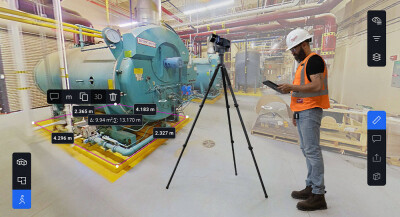If you’re old enough to remember watching MTV on a television, you might have seen an Aphex Twin music video once or twice. You would remember if you had.
Aphex Twin—Richard James to his parents—is a Cornish musician with a reputation for being both an eccentric recluse (he most likely lives in a bank) and a visionary music genius with a unique flair for the psychedelic (he sometimes composes his tracks while lucid dreaming). That vibe extends to his videos, which appear as if they’ve been beamed down from space.
Why am I writing about him? His latest video uses 3D capture–and proves that we’ve entered a new era with the technology.
An article at Fast Company lays out how the team made it: “The first third part,” explains video producer Weirdcore, “is all video processed in a videogrammetry way, followed by a 3D-scan collage of various places in Cornwall, scanned in a photogrammetry way, and then it’s using loads of 3D-scanned textures. I was planning to use loads of lidar scans, too, but didn’t get around to it.”
You might be surprised by the casual way he refers to 3D technology (e.g., “in a videogrammetry way”), despite the really, truly awesome results he achieved. I see this as a sign that we’ve come a long way since Radiohead first used lidar for its “House of Cards” video. Back then, the band contracted the services of a professional provider with a huge amount of experience to help them create relatively simplistic point-cloud visuals. These days, a person like Weirdcore can mix and match commercially available technologies on the fly, presumably without in-depth professional training, and just see what happens. This ease of use is as hugely exciting for artists as it is for the rest of the population—I believe we can say that we’ve entered the age of democratized 3D tech. Who knows what people will start doing with it?
That argument extends to a lot of other cutting edge technologies, which Weirdcore sprinkles liberally throughout the video. At about 1:04, he used style transfer methods to lay dynamic colors, shapes, and textures over a photogrammetric models of Cornwall. He also used the technique to lay 3D scans of James’ face over the landscape.
“These render engines opened the door to different looks and technique,” he said. I bet you’ll agree.




.jpg.small.400x400.jpg)

